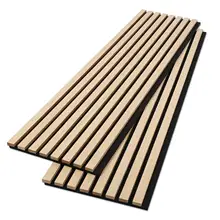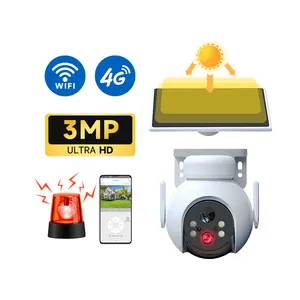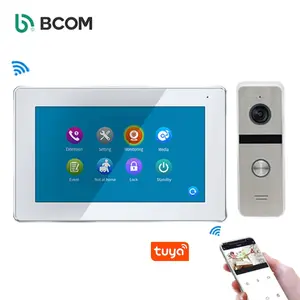Introduction
In an era where home security is paramount, it's essential to understand the various tools at our disposal. One such tool, often overlooked, is the peephole viewer. This comprehensive guide will delve into the importance of home security, the different types of peephole viewers, their installation process, benefits, potential drawbacks, and maintenance. We'll explore traditional, digital, and smart peephole viewers, each with unique features designed to enhance your home's security. Whether you're a homeowner or a renter, this guide will help you revolutionize your home security with a peephole viewer.
Understanding the Importance of Home Security
Home security systems are crucial for protecting your valuables and loved ones. They deter crime, with studies showing a decrease in residential robberies as the number of home security systems increase in an area. Modern systems offer remote access, allowing you to monitor your home from anywhere. They can also lower homeowner's insurance by up to 20%. Despite the monthly fee, the benefits of instant access to police and emergency responders make home security systems a worthwhile investment.
What is a Peephole Viewer?
A peephole viewer, also known as a peekhole, spyhole, doorhole, or magic eye, is a small, round opening in a door. It allows the person inside to see outside without opening the door or revealing their presence. The lenses are designed to enable viewing only in one direction. Typically, the opening is no larger than a dime (0.7 inches, 18 mm). Peephole viewers are commonly used in apartments and hotel rooms. Some peepholes are equipped with a fisheye lens for a wider field of view.
Types of Peephole Viewers
Peephole viewers, also known as door viewers, come in various types, each with its unique features. Traditional door viewers use a fisheye lens to provide a wide-angle view of the outside. Digital door viewers, on the other hand, display a live video feed on a small LCD screen, with some models featuring a knock sensor for automatic recording. Lastly, smart doorbells serve as advanced peephole viewers, integrating with your home security system and offering remote viewing and communication capabilities.
Traditional Peephole Viewers
Traditional peepholes, also known as door viewers, are small lenses installed in doors that allow you to view outside without opening the door. They provide a crucial layer of security, allowing homeowners to identify visitors before opening the door. Peepholes are easy to install on any standard door, requiring minimal effort and no complex wiring. They serve as a powerful deterrent against intruders and offer protection against various other risks, such as verifying the identity of delivery personnel or service providers.
Digital Peephole Viewers
Digital peephole viewers, or peephole cameras, are a modern improvement to home security. They allow you to view or record visitors at your door through a camera device installed in your door viewer hole. These devices come with a variety of features such as motion detection, video recording, recording storage, smartphone compatibility, knocking sensor, doorbell button, screen display, battery power, 2-way audio, night vision, and facial recognition. Each feature adds a layer of security and convenience, making digital peephole viewers a valuable addition to any home security system.
Smart Peephole Viewers
Smart peephole viewers offer a modern twist on traditional home security. They provide high-definition video performance and the ability to save videos in the cloud. Some models even allow you to create motion zones, specifying which areas to monitor. However, they may have limitations, such as app bugs and short battery life. Despite these challenges, smart peephole viewers are a viable option for renters and those who can't use traditional video doorbells.
How to Choose the Right Peephole Viewer for Your Home
Choosing the right peephole viewer for your home involves considering several factors. Door viewers come in a variety of viewing angles, with some offering a wide view of 160-200 degrees. The wider the angle, the broader the view. Projection and prism door viewers are convenient as they don't require you to lean into the door, using optics to project the view onto the inside viewing surface. Some door viewers feature glass lenses suitable for fire doors. Additionally, some door knockers come with a built-in viewer, offering an integrated solution.
Installation Process of a Peephole Viewer
Installing a peephole viewer is a straightforward task that can be completed in under two hours. The process involves determining the placement of the peephole, selecting the appropriate drill bit, drilling the hole, and installing the viewer. It's important to use safety equipment such as eye protection, hearing protection, a mask, and gloves, especially when drilling through a steel door. The tools required include a pencil, a square, a center punch or large nail, a hammer, a drill, one or two drill bits, and a putty knife. Materials needed are the door viewer, silicone sealant, and sandpaper.
Benefits of Using a Peephole Viewer
Modern peephole cameras offer numerous advantages. They blend seamlessly with your door, allowing discreet viewing of visitors without alerting them. They are user-friendly, especially for kids and the elderly, with a single button operation displaying the visitor's profile on a bright LCD panel. They provide a wider viewing angle than traditional peepholes, enabling a better view of the outside. Equipped with portable peephole covers, they prevent potential intruders from looking inside. Importantly, they are easy to install and offer clear visibility even in poorly lit areas.
Potential Drawbacks and How to Overcome Them
One potential drawback of peephole viewers is the threat posed by reverse peephole viewers, which can compromise your privacy. These devices, easily obtainable, allow someone to view inside your home by realigning the lenses of the peephole. However, this can be overcome by using peephole covers. There are both portable and permanent solutions available. Portable covers simply slip into your existing peephole. Permanent solutions mount to the door and can be easily slid up and down as needed.
Maintaining Your Peephole Viewer
Maintaining your peephole viewer is crucial for home security. Regular cleaning ensures a clear view of who's outside your door. It's simple to clean a peephole. If dust covers the front, wipe it with a soft, dry cloth. For dust inside or around the peephole, you may need to remove the front panel or the whole peephole. Use cotton swabs or paper towels and mild detergent or glass cleaner. If moisture is present, a hairdryer can be useful. Regular maintenance prevents dirt accumulation and ensures your peephole functions optimally.
Conclusion
In conclusion, peephole viewers are a simple yet effective tool in enhancing home security. From traditional door viewers to advanced smart peephole viewers, these devices offer a range of features to suit different needs. While there are potential drawbacks, such as the threat of reverse peephole viewers, solutions like peephole covers can effectively mitigate these risks. Regular maintenance ensures optimal functionality and a clear view of who's outside your door. By understanding the various types of peephole viewers, their installation process, benefits, and maintenance, you can make an informed decision and revolutionize your home security.










































 浙公网安备 33010002000092号
浙公网安备 33010002000092号 浙B2-20120091-4
浙B2-20120091-4